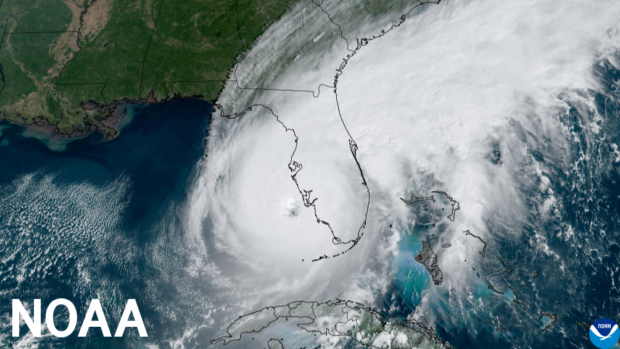Last year, the state of Florida sustained the largest hurricane loss with Ian, with estimates of more than $100 billion in economic damage, including uninsured properties, damage to infrastructure, and other cleanup and recovery costs.
Insured losses were driven almost entirely by Hurricane Ian, with two smaller events in the U.S. and one event in the Caribbean.
A new Karen Clark & Company white paper, 2022 North Atlantic Hurricane Season in Review, estimates privately insured losses from Hurricane Ian will be close to $63 billion. This figure includes residential, commercial, industrial properties and vehicles. About $200 million of that was sustained in the Caribbean and the rest from wind, storm surge and inland flood losses in the U.S.
KCC’s estimated industry losses include wind and privately insured flood losses to residential, commercial, industrial properties and automobiles. The estimates don’t include National Flood Insurance Program (NFIP) losses.
With respect to Florida, the loss estimates from Hurricane Ian includes an assumption that there will be a high number of litigated claims, comparable to the excess litigation experienced in Hurricanes Irma and Michael, the KCC report stated.
Ian-related auto losses are expected to be higher, the result of widespread storm surge.
With this year’s hurricane season set to begin next month, the look back provides details on the unique attributes of last year’s hurricane season.
In 2022, 14 tropical cyclones formed in the North Atlantic Basin; eight became hurricanes while two grew to become major hurricanes (at least Category 3).
A mid-season lull before an active second half developed, the report noted that 10 of the season’s 14 named storms developed after September 1st.
Three named storms made landfall in the U.S., the KCC report noted.
Setting a record for the latest date in the year for a hurricane to make landfall along the Florida east coast was Hurricane Nicole. Hitting the state on Nov. 10, it was the second latest landfalling storm in U.S. history.
Despite an active second half, the season finished about average with respect to the number of storms.
The KCC report outlined the underlying trends influenced by climate change that contributed to the mostly docile 2022 hurricane season, as compared to prior years. Even so, there were an above-average number of named storms and total insured losses caused by Hurricane Ian will be record-setting.
“The number of major hurricanes was below average, as was the Accumulated Cyclonic Energy (ACE)—a measure of the energy produced by all tropical cyclones in a season,” the report stated.
Continued high sea-surface temperatures (SSTs) in the Atlantic supported rapid intensification of storms. According to the report, a hurricane needs three ingredients to rapidly intensify: low vertical wind shear, high ocean heat content and high SSTs. For example, Hurricane Ian underwent rapid intensification twice.
A high shear environment suppressed tropical development for much of the season, KCC noted, leading to fewer storms than predicted by NOAA despite La Niña and warm SSTs.
The report found that the three-year period of 2020, 2021 and 2022 “marks the first time in the historical record that hurricanes with maximum winds of 150 mph or greater have made landfall in the U.S. in consecutive years (Laura, 2020; Ida, 2021; Ian, 2022).”
Maximum sustained winds of 150 mph were recorded when Hurricane Ian made landfall near Cape Coral.
While 2022’s hurricane season reflected predictions based on La Niña’s influence (when the east Pacific is cooler, it generally leads to more active hurricane seasons), 2023’s hurricane season predictions will be based on expected El Niño conditions (when the east Pacific is warmer, a less active hurricane season is expected).
The National Oceanic and Atmospheric Administration (NOAA) will issue its outlook for the 2023 Atlantic hurricane season during an in-person news conference on May 25, 11 am Eastern.
The U.S. weather agency will discuss the expected number of storms for the upcoming Atlantic hurricane season, along with climate factors that could influence hurricane development. The 2023 hurricane season begins June 1 and typically runs through Nov. 30.





















 AIG Partners With Amwins, Blackstone to Launch Lloyd’s Syndicate Using Palantir
AIG Partners With Amwins, Blackstone to Launch Lloyd’s Syndicate Using Palantir  AI in Property/Casualty Insurance: Why Trusted Data Is the Missing Link
AI in Property/Casualty Insurance: Why Trusted Data Is the Missing Link  Examining 5 Key Factors Fueling MGA Growth—and Emerging Challenges Ahead
Examining 5 Key Factors Fueling MGA Growth—and Emerging Challenges Ahead  Unpacking a Consumer Intervenor’s Novel Idea
Unpacking a Consumer Intervenor’s Novel Idea 